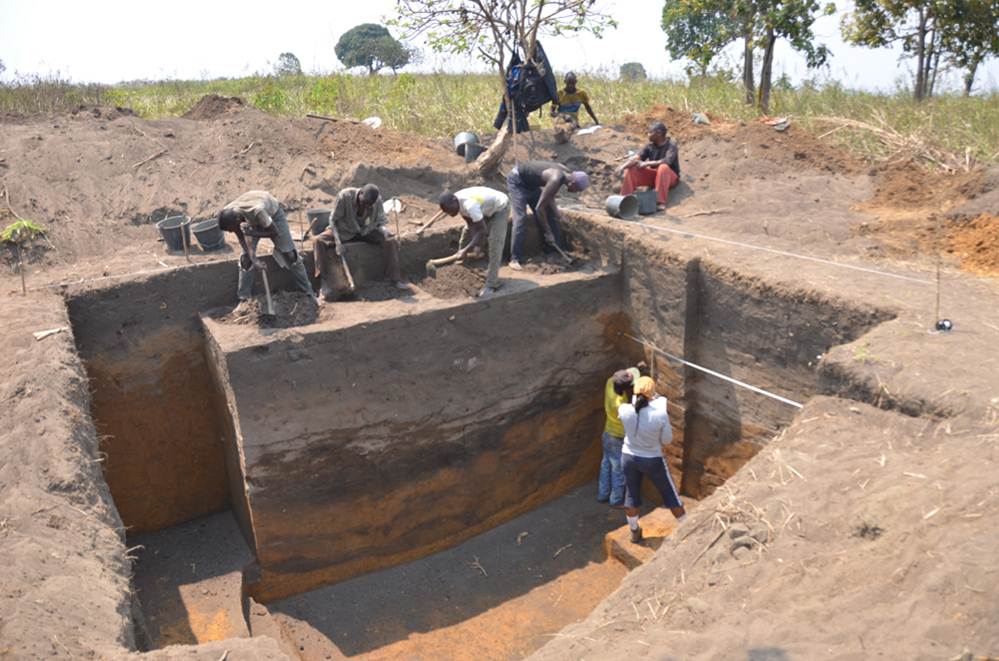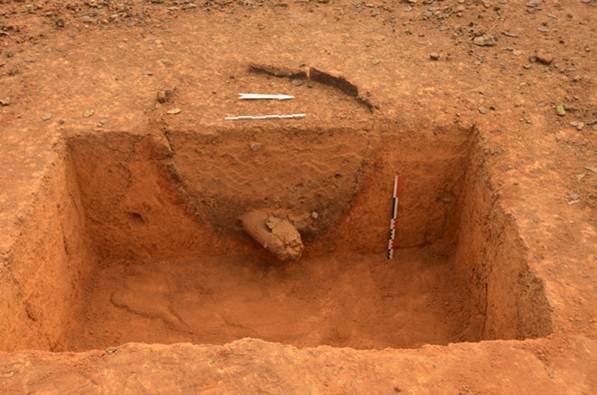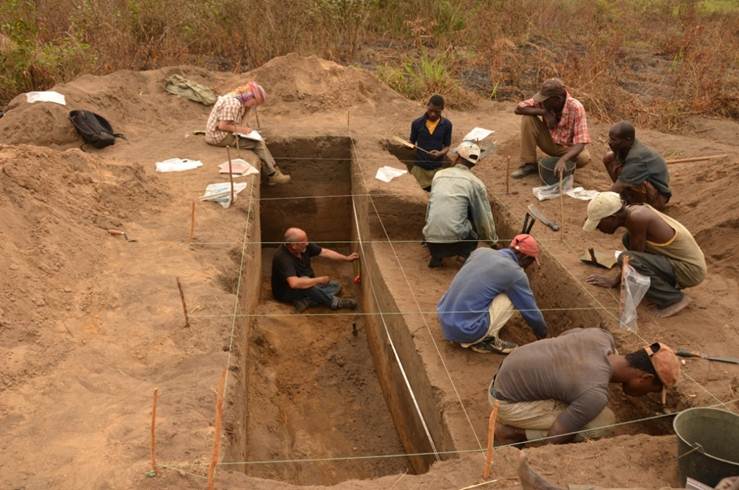
Ngongo Mbata: huge pit from the ancient late 16th to late
18th centuries' settlement, 2015 excavations

Mbanza Nsundi: Glass and shell beads, from a female tomb
from the Mbanza 18th-early 19th cemetery, 2013 excavations

Kazu 6: iron smelting furnace under excavation, note the
tuyere in position in the furnace's fill, 2015 excavations

Mbanza Nsundi: 2015 excavation under way, on a 17th-18th
century area of the mbanza
KONGOKING : Archaeology
Archaeology of complexity and urbanism in Central Africa
Since historical records are relatively recent, it goes without saying that archaeology is
indispensable for the reconstruction of Central Africa’s past. Unfortunately, during
European colonization, the history of pre-colonial states in this part of the continent was
deemed hardly worth excavating. The problematic political and economic situation
persisting since then has seriously slowed down progress in archaeology.
The fact that the emblematic Kongo kingdom has never been the object of a systematic
excavation program is of course significant in this respect.
Nonetheless, with its wide diversity of pre-colonial political systems, ranging
from ‘acephalous’ societies to highly centralized kingdoms, the archaeology of Central
Africa provides an important input to recent theories on the growth of social and
political complexity. This is especially so for the Lower Congo area, where not only the
Kongo empire arose, but where more or less contemporaneous kingdoms or states also
developed, such as Loango, Tio and Mbundu.
Being very similar but each with its own particularities, these political systems represent
an interesting situation of unity in diversity. The earliest available oral traditions on the
Kongo kingdom, for instance, point out that it was mainly formed through a federation of
different independent provinces. Only some provinces would have been subjugated by
force. The same oral traditions, collected in the 16th and 17th century, allow tracing back
the kingdom’s history as far as the second half of the 14th century. Since such traditions
always incorporate mythical elements and are often manipulated to justify the ruling
powers, their historical value can always be debated. They are not very informative on
the economic, social and cultural developments underlying the rise of this centralized
state either.
The little archaeological research done in the Lower Congo region so far shows a high
density of prehistoric occupations from around 500 BC, but there is a gap in the
archaeological record between AD 250 and 1000. After that date, archaeologists
recovered several ceramic traditions bearing witness of emerging trade networks in the
area, which possibly brought about political centralization. The growing importance of
iron and copper, also attested in the archaeological record, connects with the strong
relationship between metallurgy and political power omnipresent in Kongo mythology.
Also linked with the increase of political complexity and social stratification is the rise of
urbanism.
It is known from the historical records that the Kongo kingdom had not only a central
capital, i.e. Mbanza Kongo located in current-day Angola, but also each province had its
own capital. These early cities are unique in Africa south of the Equator. Their
archaeological documentation will certainly be beneficial for recent theories on early
urbanism in Africa and other tropical regions of the world which have stressed cross-
cultural diversity. Early European travel accounts describe the layout of the Kongo
capital cities as one of open, scattered garden- cities with a ceremonial and symbolic
centre.
Preliminary excavations carried out in graveyards of two provincial capitals yielded an
interesting mixture of Kongo pottery and pipes with European objects such as religious
medals, crosses, iron weapons, glass bottles, decorated nail heads, and tombstones.
It is clear that digging these mbanza sites is highly relevant for our understanding of the
character of early African- European relations and may challenge Eurocentric accounts of
this contact prevailing in the early European reports.
This unique interplay between historical documents and the archaeological record offers
an ideal test case for historical method and may add to the debate on the concept
of ‘historical archaeology’ in the specific context of Africa. Archaeological finds may
shed a different light on issues which are ideologically charged in the historical accounts,
such as the adoption of Christian faith, or surrounded with mystery, such as the ‘Jaga’
invasions in the 2nd half of the 16th century.
